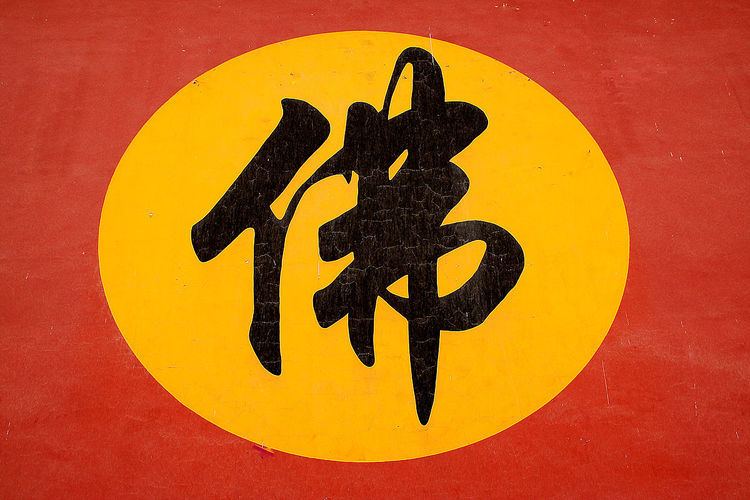 | ||
East Asian Madhyamaka refers to the Buddhist traditions in East Asia which represent the Indian Madhyamaka system of thought. In Chinese Buddhism, these are often referred to as the Sānlùn school (Ch. 三論宗), or "Three Treatise" school, known as Sanron in Japan, although modern scholars think them not an independent sect. The Madhyamaka texts that it was founded on were first transmitted to China in the early 5th century by the Buddhist monk Kumārajīva.
Contents
Founding and early teachers
The name Sānlùn derives from the fact that its doctrinal basis is formed by three principal Madhyamaka texts composed by Nāgārjuna and Āryadeva, which were then translated into Chinese by Kumārajīva. These three foundational texts are:
Sometimes a fourth text is added, changing the collection's title to the "Four Treatises" (Ch. 四論, pinyin: Silun):
Nāgārjuna is traditionally regarded as the Indian founder of the Madhyamaka school in India, while Kumārajīva is traditionally regarded as the founder of Sanlun school in China. Kumārajīva's disciple Sengzhao then continued to promote Madhyamaka teachings, and wrote several works from this standpoint.
Popularization under Jizang
The Three Treatise teachings were first propagated widely by Jizang, a prolific writer who composed commentaries on these three treatises. One of his most famous works is the Erdi Yi (二諦意), or "Meaning of the Two Truths", referring to the conventional and ultimate truths. In one passage of the Erdi Yi, Jizang cites his own teacher, Falang:
"My teacher [Falang] said: Although those four treatises (i.e. the Three Treatises and the [Mahāprajñāpāramitā Śāstra]) have different names, all of them have the same goal, which is to explain the two truths and manifest the doctrine of non-duality. If one can understand the two truths, then the four treatises may be understood completely. If one cannot understand the two truths, then the four treatises cannot be understood. For this reason, it is necessary to understand the two truths. Again, if one understand the two truths, not only may the four treatises be understood, but also all the sutras may be understood."
In addition to popularizing Madhyamaka, Jizang also wrote commentaries on the Mahāyāna sūtras such as the Lotus Sūtra and the Vimalakīrti Nirdeśa Sūtra. In addition to Madhyamaka, Jizang also wrote favorably about the Tathāgatagarbha teachings. In all, Jizang wrote nearly fifty books in his lifetime. A selection of his Madhyamaka works is the following:
Modern Chinese traditions
In the early part of the 20th century, the laymen Yang Wenhui and Ouyang Jian (Ch. 歐陽漸) (1871–1943) promoted Buddhist learning in China, and the general trend was for an increase in studies of Buddhist traditions such as Yogācāra, Madhyamaka, and the Huayan school.
In the 20th century, while the great monk scholar Venerable Yin Shun was often associated with this school, he himself did not claim such direct affiliation:
In Zhōngguān jīnlùn (中觀今論 Modern Discussion on the Madhyamaka) [pg. 18, 24], I stated: “Amongst my teachers and friends, I am seen as a scholar of either the Three Treatise (三論 sanlun) or the Emptiness schools”, although I “certainly do have great affinities with the fundamental and essential doctrines of the emptiness school”, however, “I do not belong to any particular school of thought within the emptiness schools”.
History in Japan
In 625, the Korean monk Hyegwan brought the Sanlun school to Japan, where it was known as Sanron. Like many of the Nanto Rikushū or schools of the Nara period it died out and was absorbed by later sects such as Shingon Buddhism and Tendai.
